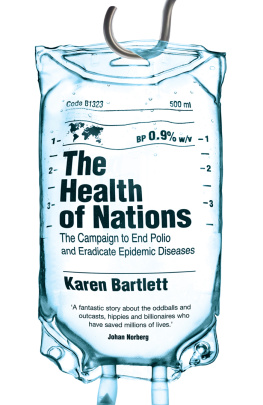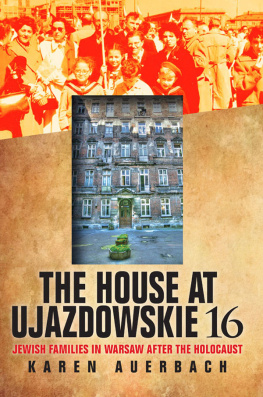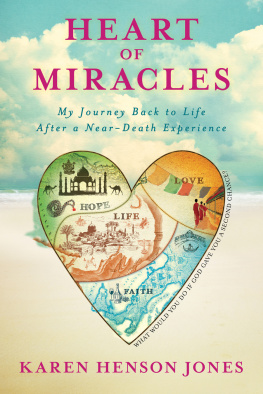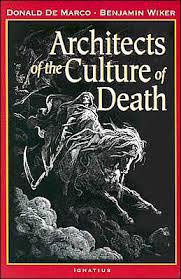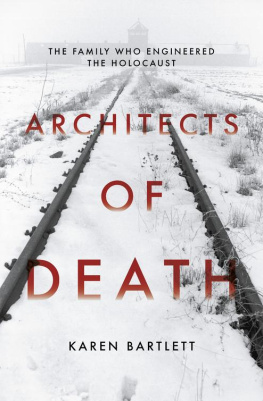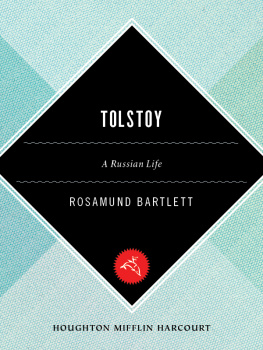Karen Bartlett - Architects of Death: The Family Who Engineered the Holocaust
Here you can read online Karen Bartlett - Architects of Death: The Family Who Engineered the Holocaust full text of the book (entire story) in english for free. Download pdf and epub, get meaning, cover and reviews about this ebook. year: 2018, publisher: Biteback Publishing, genre: Home and family. Description of the work, (preface) as well as reviews are available. Best literature library LitArk.com created for fans of good reading and offers a wide selection of genres:
Romance novel
Science fiction
Adventure
Detective
Science
History
Home and family
Prose
Art
Politics
Computer
Non-fiction
Religion
Business
Children
Humor
Choose a favorite category and find really read worthwhile books. Enjoy immersion in the world of imagination, feel the emotions of the characters or learn something new for yourself, make an fascinating discovery.
- Book:Architects of Death: The Family Who Engineered the Holocaust
- Author:
- Publisher:Biteback Publishing
- Genre:
- Year:2018
- Rating:4 / 5
- Favourites:Add to favourites
- Your mark:
- 80
- 1
- 2
- 3
- 4
- 5
Architects of Death: The Family Who Engineered the Holocaust: summary, description and annotation
We offer to read an annotation, description, summary or preface (depends on what the author of the book "Architects of Death: The Family Who Engineered the Holocaust" wrote himself). If you haven't found the necessary information about the book — write in the comments, we will try to find it.
Karen Bartlett: author's other books
Who wrote Architects of Death: The Family Who Engineered the Holocaust? Find out the surname, the name of the author of the book and a list of all author's works by series.
Architects of Death: The Family Who Engineered the Holocaust — read online for free the complete book (whole text) full work
Below is the text of the book, divided by pages. System saving the place of the last page read, allows you to conveniently read the book "Architects of Death: The Family Who Engineered the Holocaust" online for free, without having to search again every time where you left off. Put a bookmark, and you can go to the page where you finished reading at any time.
Font size:
Interval:
Bookmark:
For Max
JOHANNES TOPF (18161891): founded J. A. Topf and Sons in Erfurt on 1 July 1868.
JULIUS TOPF (18591914): son of Johannes Topf. Ran Topf and Sons jointly with his brother Ludwig Sr, until he relinquished his share due to ill health.
LUDWIG TOPF SR (18631914): son of Johannes Topf. Ran Topf and Sons until his death in 1914.
ELSE TOPF (18821940): wife of Ludwig Topf Sr, mother of Ludwig Jr and Ernst Wolfgang.
JOHANNA ( HANNA ) TOPF (1902 UNKNOWN ): the eldest child of Ludwig Sr and Else. Sister of Ludwig and Ernst Wolfgang.
VIKTOR KARL LUDWIG TOPF (19031945): son of Ludwig Topf Sr. Brother of Ernst Wolfgang. Director of Topf and Sons from 1933 until 1945.
ERNST WOLFGANG TOPF (19041979): son of Ludwig Topf Sr. Brother of Ludwig Jnr. Director of Topf and Sons from 1933 until 1945.
HARTMUT TOPF (b. 1934): grandson of Julius Topf, great-grandson of Topf and Sons founder Johannes Topf. Puppet diplomat and journalist.
KURT PRFER (18911952): joined Topf and Sons in 1911. Head of the oven construction and cremation department.
FRITZ SANDER (18761946): employed at Topf and Sons since 1910. Authorised company representative, and co-head of the Furnace Construction division, D I. Reviewed all of Kurt Prfers work.
KARL SCHULTZE (1900 UNKNOWN ): head of Department B, Ventilation Systems, at Topf and Sons.
MAX MACHEMEHL (1891 UNKNOWN ): manager of the commercial department at Topf and Sons and SS security representative.
HEINRICH MESSING (1902 UNKNOWN ): a Topf and Sons fitter from Department B (responsible for ventilation technology), who was deployed to Birkenau for five months in 1943.
WILHELM KOCH (1876 UNKNOWN ): a Topf and Sons furnace builder who worked on the installation of the ovens in Auschwitz Crematorium II.
MARTIN HOLICK (1874 UNKNOWN ): a Topf and Sons furnace builder who worked on the installation of the ovens in Auschwitz Crematorium II.
WILLY WIEMOKLI (1908 UNKNOWN ): bookkeeper at Topf and Sons from 1939 onwards. Wiemoklis father was Jewish, and both were imprisoned by the Nazis.
GUSTAV BRAUN (18891958): Operations Director at Topf and Sons from 19351945.
UDO BRAUN (b. 1936): son of Gustav Braun and head of VEB Erfurter Mlzerei- und Speicherbau (EMS), formerly J. A. Topf and Sons.
It is not Hartmut Topfs first visit to Auschwitz, and, at the age of eighty-three, it may or may not be his last. Wearing his flat cap and the earphones for the German-language audio tour, Hartmut straggles a way behind the rest of his group, quietly taking in the scene of the main camp. It is raining heavily. After three hours of walking through the grounds of the neighbouring camp, Birkenau, his clothes are soaking. With wild grey hair sticking out over his ears, a beard and a long raincoat buttoned to the neck, he looks something like an electrified Sherlock Holmes. His blue eyes flick from scene to scene; a barrack, the laundry room, the famous gate with the sign that says Arbeit Macht Frei. Hartmut appears to be listening intently to something although it turns out that the audio guide has not yet begun. Instead he is thinking, as he must be, about what it means to be a Topf at this place. A place he is umbilically linked to, through a connection he has been trying to be make sense of for almost his entire life. It would be easy for him to say he feels regretful, guilty. Sad. Instead, he holds back. Pauses for a long second, and frames his words carefully. The crimes that happened here are very sad, he says eventually.
Hartmut is a strange sort of guest of honour at Auschwitz. It is the opening day for an exhibition exploring the work of the family company he was born into, Topf and Sons, a name immortalised globally when post-war newsreels showed images of Topf and Sons stamped in iron on the crematorium ovens that fuelled the Holocaust. Once a venerable German family firm, well known for making machinery for brewing and malting; it was a company that descendants like Hartmut, whose great-grandfather J. A. Topf had founded the company, could feel proud of. During the 1930s, however, Topf and Sons developed a new line of business building ovens and ventilation systems for the growing trend of human cremation which promoted an altogether more modern, regulated and hygienic way of death. Although this work remained a tiny part of the business, and only ever accounted for 3 per cent of profits, its grim achievements and legacy would consume the company, and ensure that Topf and Sons would live in infamy.
By the end of the 1930s, a series of business decisions, family feuds and bitter personal rivalries between employees would tie Topf and Sons ever more closely into the ugliest work of the Nazi regime by producing the ventilation systems for the gas chambers and the ovens that disposed of the bodies of millions of their victims. The men behind these crimes, company directors Ludwig and Ernst Wolfgang Topf, along with their managers, engineers, oven fitters and ventilation experts, were not ignorant paper pushers or frightened collaborators instead they willingly engaged with the Nazis, reaping the benefits, taking every advantage they could, and pushing their designs for mass murder and body disposal further and further until they could truly be described as the engineers of the Holocaust. They were men who, by the end of the Second World War, were dreaming dreams of extinction so outlandish that even the SS were unable to accept their plans.
In Berlin, their cousin Hartmut Topf was still a teenage boy when, sitting in a cinema, he saw the post-war newsreel that showed the Topf and Sons name inscribed above the oven in a concentration camp. Almost seventy years later, he remains a man in shock: how did it come to be that a conservative family firm in the pleasant Thuringian city of Erfurt could be responsible for such heinous crimes?
When I got home, I asked my mother about what Id seen in the newsreel, but she knew nothing about it, Hartmut says. By then my father was a prisoner of the Soviet army. It seemed that no one could give me any answers, and no one wanted any questions.
Hartmuts younger sister Karin looks blank when he asks her for her reaction to the familys place in history. Weve never talked about it, she admits, sitting in their family home in Falkensee, a suburb just south of Berlin. This is the house that their father built, and where Hartmut and his sisters Elke and Karin grew up and lived out the war years. Karin makes clear though that although she respects and supports Hartmuts efforts over the years to reveal the truth about Topf and Sons, in a quest for atonement, she remembers no similar moment of astonishment upon discovering the dark side of the family name. Ive never thought about it, she says, after giving the question puzzled consideration.
Back at the Topf and Sons exhibition at Auschwitz, a small crowd gathers as the German First Minister for the State of Thuringia arrives. Among the group are some of the founders of the Topf and Sons memorial that now houses a permanent exhibit at the site of the original factory. Annegret Schle, the director of the memorial and author of the German history of the company, is there, as are two local journalists from Erfurt and the leader of Thuringias small Jewish community. Although Hartmut is the only member of the family present, he melts inconspicuously into the background, coming forward only when he is called. Yet he is undoubtedly part of a tireless effort over nearly three decades to bring the truth about Topf and Sons to light.
Font size:
Interval:
Bookmark:
Similar books «Architects of Death: The Family Who Engineered the Holocaust»
Look at similar books to Architects of Death: The Family Who Engineered the Holocaust. We have selected literature similar in name and meaning in the hope of providing readers with more options to find new, interesting, not yet read works.
Discussion, reviews of the book Architects of Death: The Family Who Engineered the Holocaust and just readers' own opinions. Leave your comments, write what you think about the work, its meaning or the main characters. Specify what exactly you liked and what you didn't like, and why you think so.


